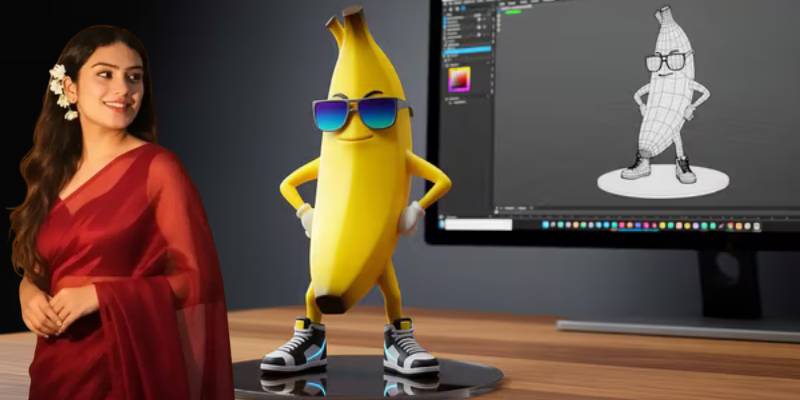Google’s latest AI craze, Nano Banana (aka Gemini 2.5 Flash Image), has turned ordinary selfies into retro-Bollywood dreamscapes adorned in sarees, dramatic lighting, golden-hour tones and cinematic flair. It’s fun, it’s viral—but a growing chorus of voices says: behind this glamour lies a looming privacy risk.
What is Nano Banana & Why Sarees Suddenly Everywhere?
People lost no time: upload a selfie, give a prompt, and Nano Banana wraps you in chiffon sarees, vintage backdrops, or glowing retro filters. It’s part of Google’s Gemini Nano tech, which already has been used in 3D figurine style edits. The ‘vintage saree’ take is just one of the many stylistic spins.
When Glamour Gets Creepy
One Instagram user reported seeing a mole in her edited image in exactly the same place on her hand—even though her original selfie didn’t have that mole. Spooky, right?
How did the AI “know”? That’s one of the concerns. Some believe it could be inference from prior images, metadata leakage, or model overfitting to certain features. Either way, it strikes at the heart of personal identity and raises serious questions.
Google’s Safeguards (and Why They Might Not Be Enough)
- All images edited via Nano Banana carry an invisible watermark (called SynthID) and metadata tags to indicate that they’re AI-generated.
- Google says your uploaded images are processed securely on its servers and aren’t used for training models unless you explicitly consent.
- Experts warn watermarking is a good start, but not bulletproof. Watermarks can be stripped, altered, or bypassed. Alone, they won’t stop deepfakes or misuse.
What Experts Recommend
To avoid being a victim of unintended consequences, here are some suggestions people are sharing (and I personally agree with most of them):
- Think twice before uploading photos with sensitive or identifying features.
- Strip metadata (location, time, device info) wherever possible.
- Keep original copies of images so you can track misuse.
- Read the terms of service: find out if your photos might legally be used for training or shared.
- Use strong privacy settings on any platform sharing or hosting your edits.
- Demand more transparency from AI companies: not just notice of watermark, but tools for verifying them.
Why This Matters More Than It Looks
These saree edits seem harmless or just aesthetic—but there’s a bigger picture. Deepfake technology thrives on realistic, detailed images.
Each uploaded image could feed into training datasets, give hints about one’s appearance, style, or identity. Over time, what starts as playful nostalgia could become material for impersonation, identity theft, nonconsensual editing, or disinformation.
What I Think
I love creativity and style, and I get why people are enjoying this trend. But I feel uneasy when I see the line between fun and exploitation getting blurry.
The mole example—real or glitch—is a wake-up call. If an AI edit “knows” something I didn’t disclose, how many things might it “infer” without us even noticing?
Regulation, better detection tools, user education—all of that needs to catch up fast. Otherwise, we may be handing over more than just selfie fun to big data and algorithms.
Bottom Line
Nano Banana is a fun tool. The sari aesthetic is beautiful, nostalgic, wildly shareable. But with power comes responsibility (yes, cliché but true).
If you’re trying it out, enjoy—but tread carefully. Your image isn’t just a filter; it might be a seed for something you neither asked for nor expected.

